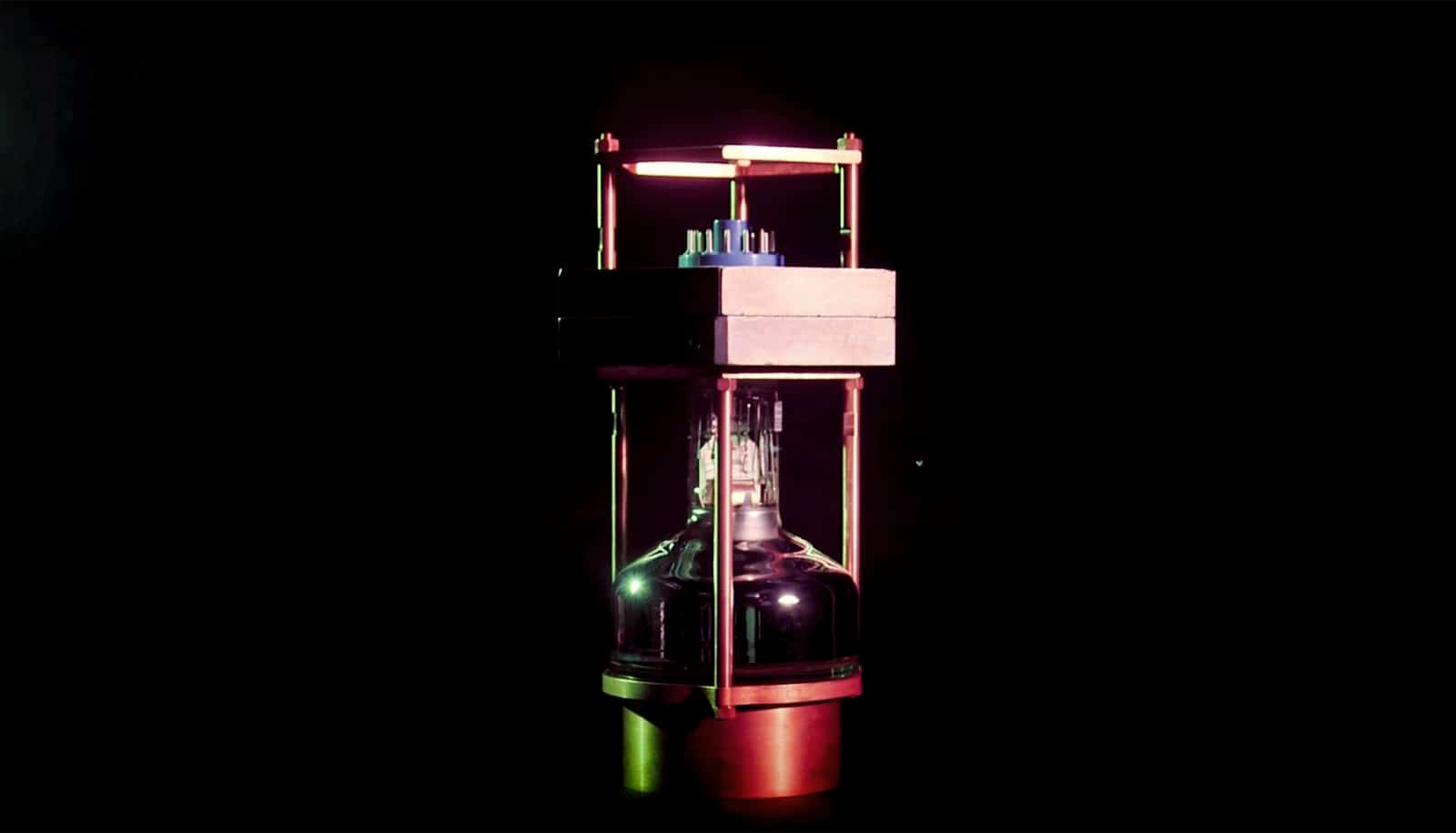In 1974, a physicist predicted a new way for ghostly particles called neutrinos to interact with matter. More than four decades later, the world’s smallest neutrino detector has observed the elusive interaction for the first time.
Neutrinos are a challenge to study because their interactions with matter are so rare. Particularly elusive has been what’s known as coherent elastic neutrino-nucleus scattering, which occurs when a neutrino bumps off the nucleus of an atom.
Researchers detected the scattering process by using a detector that’s small and lightweight enough for a researcher to carry.
“Why did it take 43 years to observe this interaction?” asks Juan Collar, a physics professor at the University of Chicago and senior member of the Kavli Institute for Cosmological Physics. “What takes place is very subtle.”
At the time, Freedman didn’t see much of a chance for experimental confirmation, writing: “Our suggestion may be an act of hubris, because the inevitable constraints of interaction rate, resolution, and background pose grave experimental difficulties.”
When a neutrino bumps into the nucleus of an atom, it creates a tiny, barely measurable recoil. Making a detector out of heavy elements such as iodine, cesium, or xenon dramatically increases the probability for this new mode of neutrino interaction, compared to other processes. But there’s a trade-off, since the tiny nuclear recoils that result become more difficult to detect as the nucleus grows heavier.
“Imagine your neutrinos are ping-pong balls striking a bowling ball. They are going to impart only a tiny extra momentum to this bowling ball,” Collar says.
To detect that bit of tiny recoil, researchers figured out that a cesium iodide crystal doped with sodium was the perfect material. The discovery led the scientists to jettison the heavy, gigantic detectors common in neutrino research for one similar in size to a toaster.
The 4-inch-by-13-inch detector used to produce the results weighs only 32 pounds (14.5 kilograms). In comparison, the world’s most famous neutrino observatories are equipped with thousands of tons of detector material.
“You don’t have to build a gigantic laboratory around it,” says doctoral student Bjorn Scholz, whose thesis will contain the result reported in Science.
“We can now think about building other small detectors that can then be used, for example to monitor the neutrino flux in nuclear power plants. You just put a nice little detector on the outside, and you can measure it in situ.”
Mysterious particles
Neutrino physicists, meanwhile, are interested in using the technology to better understand the properties of the mysterious particle.
“Neutrinos are one of the most mysterious particles,” Collar says. “We ignore many things about them. We know they have mass, but we don’t know exactly how much.”
Physicist says data from neutrino experiment are ‘gorgeous’
Through measuring coherent elastic neutrino-nucleus scattering, physicists hope to answer such questions. The new paper, for example, imposes limits on new types of neutrino-quark interactions that have been proposed.
The results also have implications in the search for Weakly Interacting Massive Particles. WIMPs are candidate particles for dark matter, which is invisible material of unknown composition that accounts for 85 percent of the mass of the universe.
“What we have observed with neutrinos is the same process expected to be at play in all the WIMP detectors we have been building,” Collar says.
Neutrino alley
The COHERENT Collaboration, which involves 90 scientists at 18 institutions, has been conducting its search for coherent neutrino scattering at the Spallation Neutron Source at Oak Ridge National Laboratory in Tennessee. The researchers installed their detectors in a basement corridor that became known as “neutrino alley.” This corridor is heavily shielded by iron and concrete from the highly radioactive neutron beam target area, only 20 meters (less than 25 yards) away.
‘Ice fishing’ for neutrinos yields new measurements
This neutrino alley solved a major problem for neutrino detection: It screens out almost all neutrons generated by the Spallation Neutron Source, but neutrinos can still reach the detectors. This allows researchers to more clearly see neutrino interactions in their data. Elsewhere they would be easily drowned out by the more prominent neutron detections.
The Spallation Neutron Source generates the most intense pulsed neutron beams in the world for scientific research and industrial development. In the process of generating neutrons, the SNS also produces neutrinos, though in smaller quantities.
“You could use a more sophisticated type of neutrino detector, but not the right kind of neutrino source, and you wouldn’t see this process,” Collar says. “It was the marriage of ideal source and ideal detector that made the experiment work.”
The National Science Foundation, Alfred P. Sloan Foundation, US Department of Energy, and the Kavli Institute for Cosmological Physics funded the work.
Source: University of Chicago



